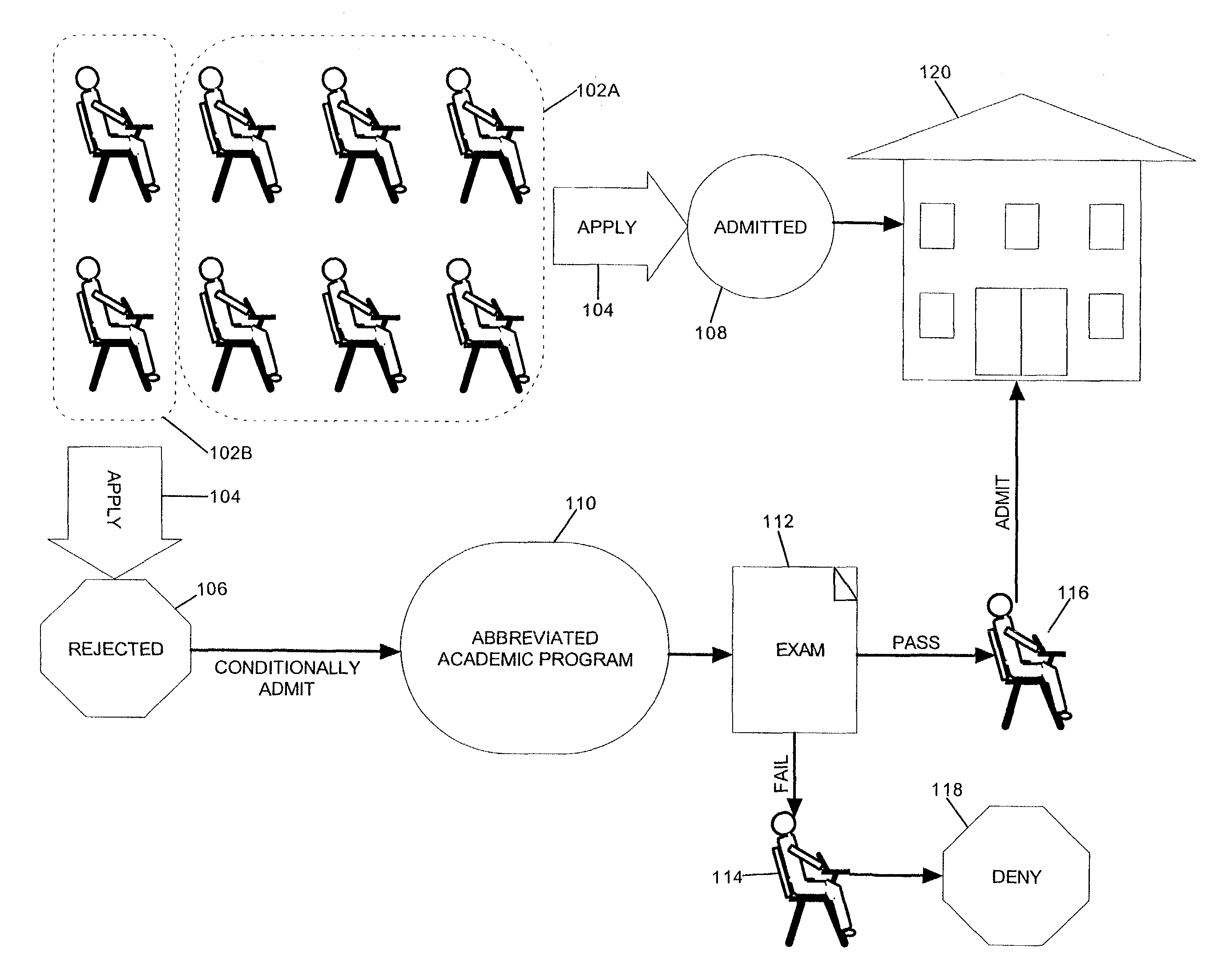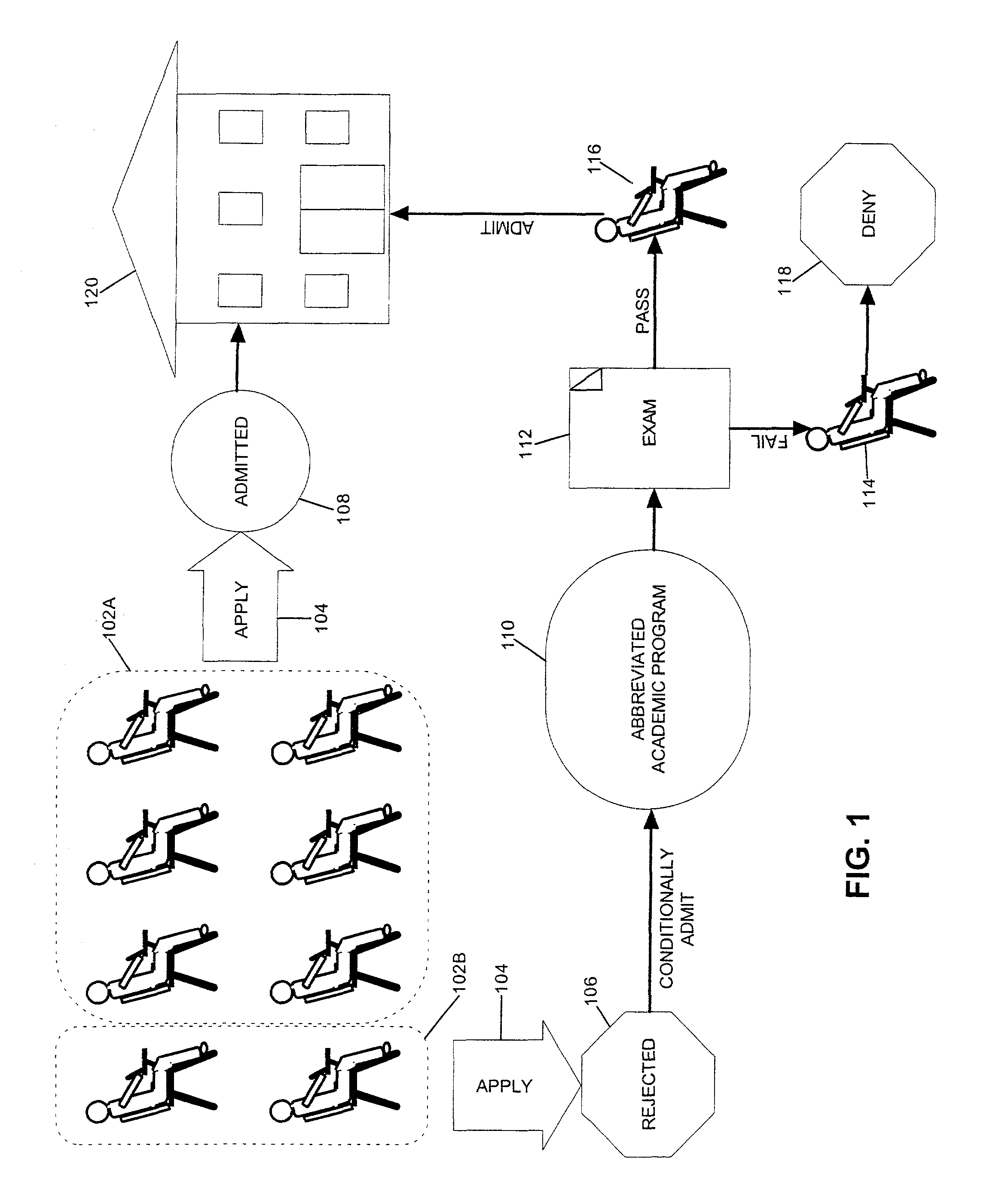Method for admitting an admissions applicant into an academic institution
a technology for admissions applicants and academic institutions, applied in the field of school admissions, can solve the problems of largely unsuccessful admissions to most if not all academic institutions to which students are admitted, and achieve the effect of improving the chances of admission
- Summary
- Abstract
- Description
- Claims
- Application Information
AI Technical Summary
Benefits of technology
Problems solved by technology
Method used
Image
Examples
Embodiment Construction
[0028]In the method of the invention, a pool of standardized test takers can be analyzed. A typical standardized test can include the scholastic aptitude test (SAT), law school admission test (LSAT), graduate record examination (GRE), and the like. As is the case with most standardized tests, test taker demographics can be collected and provided to the admissions offices of selected academic institutions. From the demographics and admission records, it can be determined whether a test taker has successfully gained entrance into at least one academic institution of choice. Thus, an analysis of the demographic data can be used to identify particular test takers who have applied for admission to at least one academic institution, but have not received an offer of admission to any academic institutions. A typical academic institution can include an undergraduate college, law school, or other graduate school.
[0029]FIG. 1 is a pictorial illustration of a method for admitting applicants in...
PUM
 Login to View More
Login to View More Abstract
Description
Claims
Application Information
 Login to View More
Login to View More - Generate Ideas
- Intellectual Property
- Life Sciences
- Materials
- Tech Scout
- Unparalleled Data Quality
- Higher Quality Content
- 60% Fewer Hallucinations
Browse by: Latest US Patents, China's latest patents, Technical Efficacy Thesaurus, Application Domain, Technology Topic, Popular Technical Reports.
© 2025 PatSnap. All rights reserved.Legal|Privacy policy|Modern Slavery Act Transparency Statement|Sitemap|About US| Contact US: help@patsnap.com



